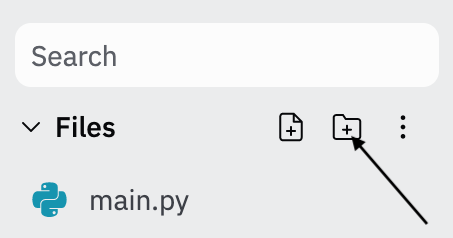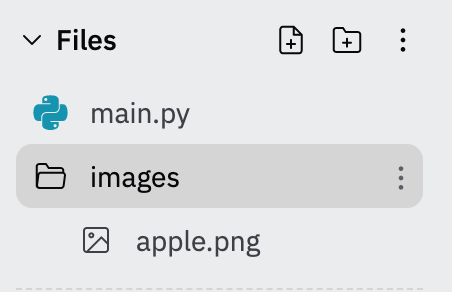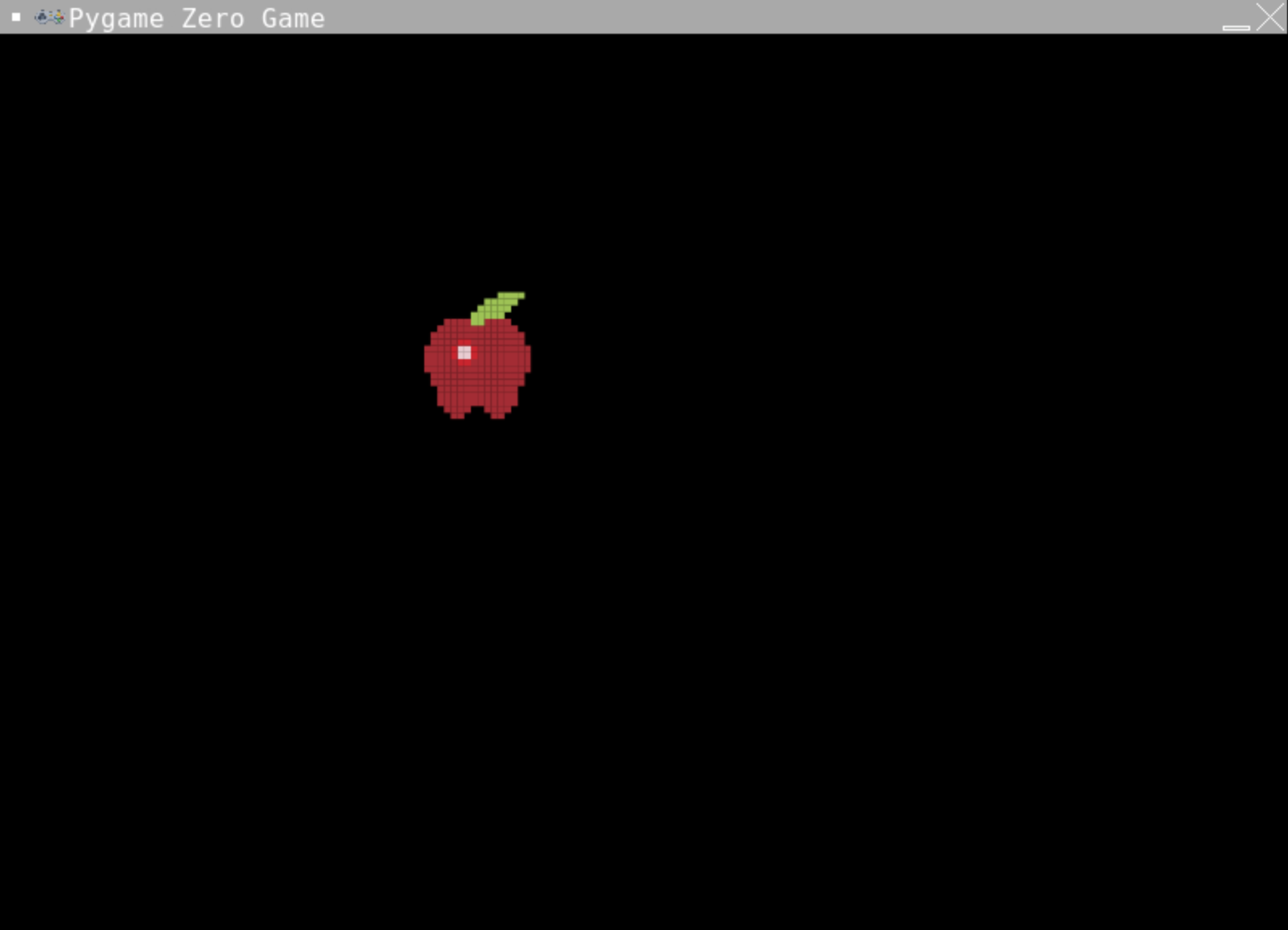Shoot the Fruit
When the game starts, an apple appears on the screen for you to “shoot.” If you hit it, a “Good shot!” message pops up, and the apple appears at another point on the screen. But if you miss, a “You missed!” message is shown, and the game ends.
How it works
The game is constantly checking whether you’ve clicked the mouse button.
Every time you click on the apple, it needs to be drawn again somewhere
else on the screen. If you click and miss, the game will end. The below flowchart shows
the logic behind the
game. The main part
of the code is a loop
that checks if you have
clicked on the apple or not.
Get shooting!
In this program, you’ll start by drawing an apple on the screen, then you’ll learn to place it at random points before you start shooting it. Let’s get coding!
Open Replit
Create a new Repl called shoot_the_fruit.Set up an image folder
This game uses an image of an apple. In the upper left corner of the screen, click the folder icon with a plus sign and name the folder images.
Put the image into the folder
Click HERE to download the Shoot the Fruit images. Find the file called “apple.png”. Click the three dots and select Upload file. Then, select apple.png from the files.
Drag apple.png into the images folder. Your folders should look something like this now.

Import pgzrun
Remember, in order to run our game, we need to import pgzrun. Add the below code.
import pgzrun
Introducing an Actor
Now you can start writing some code. Go to main.py, erase the sample code, and write this line of code in the editor window. Then click Run.
apple = Actor("apple")
Drawing the apple on the screen
Next you need to “draw” the apple on the screen. To do this, you can use a built-in Pygame Zero function called draw(). This function is used to redraw the game screen. For example, if a character has moved or a score has changed, you can use this function to update the screen with those changes. Write this code beneath your previous code.
def draw():
screen.clear()
apple.draw()
Call pgzrun.go()
In order to start the game, we have to use our pgzrun import by calling pgzrun.go() at the very end of our program. Add the foillowing line to your program. MAKE SURE IT'S ALWAYS THE LAST LINE OF CODE IN YOUR PROGRAM.
pgzrun.go()
Test the code
Now it’s time to test the code. Go ahead and click Run again and see what happens.Placing the apple
At the moment, the apple appears in the top-left corner of the game window. You can change the code to place the apple exactly where you want it on the screen. Write this function, which will place the apple at the coordinates (300, 200).
def place_apple():
apple.x = 300
apple.y = 200
Running the function
After you’ve written the function to place the apple on the screen, you need to tell Python to run it. Add this extra line of code to run the function called place_apple().
place_apple()
Test it again
Save your file and then run the code again. This time the apple will appear at the point (300, 200).
Dealing with clicks
Now it’s time to write the code that will run when you press the mouse. Pygame Zero has a built-in function called on_mouse_down(), which is run every time you click the mouse. Type this code in between the code you added in Step 9 and Step 10, then run it. You should see the message “Good shot!” in the Command Prompt or Terminal window each time you click the mouse.
def on_mouse_down(pos):
print("Good shot!")
place_apple()
Adding some logic
At this point, the “Good shot!” message is displayed every time you click the mouse, but we only want it to show if the player actually hits the apple. You can do this by changing the code in the previous step to include an if statement. This code checks if the apple and the mouse cursor are in the same position. If they are, the message is displayed.
def on_mouse_down(pos):
if apple.collidepoint(pos):
print("Good shot!")
place_apple()
Missed a shot? Game over!
Add some more logic to your code, so that if you miss a shot and don’t click on the apple, it quits the game. Add an else statement in order to make this happen.
def on_mouse_down(pos):
if apple.collidepoint(pos):
print("Good shot!")
place_apple()
else:
print("You missed!")
quit()
Importing Random
The game is very easy at this point, because the apple is always drawn at the same place on the screen. You can use Python’s Random module to make the game more challenging by placing the apple at a random point on the screen each time it is drawn. First, add this code at the very top of your program.
from random import randint
Using Random
Change the code you typed in Step 9 to look like this. The code will now use the randint() function to pick a random number between 10 and 500 for the x coordinate and a random number between 10 and 500 for the y coordinate.
def place_apple():
apple.x = randint(10, 500)
apple.y = randint(10, 500)
Time to shoot!
You did it! Run your program to play the game. Each time you “shoot” the apple, it will move to a random place on the screen for you to “shoot” again.Hacks and Tweaks
Additionally, you can try the following customizations to make your game even more interesting:
Change the fruit image
Find a picture of another fruit in the Python Games Resource Pack or create one using an THIS 8-bit editor online. Make sure you’ve got a suitably sized image before you save it in the images folder. Then name the image and change the code accordingly to use the new fruit as an Actor.
kiwi = Actor("kiwi")